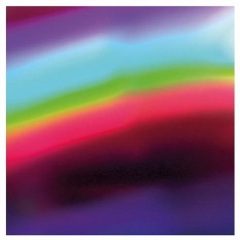Merzbow & Maurizio Bianchi – Amalgamelody (2015)
Merzbow & Maurizio Bianchi – Amalgamelody (2015)

1 Am Symphony 10:48 2 Al Modulation 7:51 3 Ga Noise 13:59 4 Me Wave 11:46 5 Lo Frequency 12:42 6 Dy Sound 9:22 Drone [Electrodrones], Sounds [Analogic Waves] – Maurizio Bianchi Electronics [All Analogue] – Masami Akita Mixed By [Final] – Masami Akita M.B. sounds recorded at Opera House in April 2015. Merzbow sound materials recorded at Munemihouse Studio, Tokyo on May 2015. Final mixed at Munemihouse Studio, Tokyo May 2015.
Third collaborative album by the Japanese and Italian grand-masters of Industrial and Noise. This time all tracks are collaborations by the two artists. Only analogue sounds used, a true return to the old roots of Industrial music. ---soundohm.com
Japanese Noise musician Merzbow, whose real name is Masami Akita has been making noise music since the 1980s. The definition of noise is "a sound, especially one that is loud or unpleasant or that causes disturbance" Noise music uses noise as a resource in it's compositions. Merzbow can likely be considered the Godfather of Noise considering before him no entity was being labelled as noise music. The idea of noise music has been evident since the 1900's. Noise music can be traced back to 1912 in Italy where the art form futurism was conceived. Futurism has a focus on technology and the industrialization of then modern living. Noise music as an idea began with Italian futurist Luigi Russolo writing the book "The Art Of Noises" in 1913 where Russolo said "The industrial revolution will pave the way for future musicians to make any sound or timbre imaginable". ---simonnavakas.blogspot.com
Prodigious avant gardist electronic creator, Maurizio BIANCHI (M.B) can today be considered among the true leaders of subsonic-industrial electronic music. His first material published between 1979 and 1984 provide new musical forms of contestation and through pulverised-sceptical-asceptic sounds (bionic music). The main purpose was to compose massive, nuclear and apocalyptic musical manifestations that can infiltrate and disturb the empire of appearances, the repressive and dogmatic conventions. Great artefacts and electronic collages in "Symphony for a genocide" (1981) and "Menses" (1982)offer radical power electronic essays which are all about chaosmos, amorphism and plasticity. Some of his later works (M. I. Nheem Alysm, A M. B. Iehn Tale, 2004...) will carry on virtual soundscapes and abstract projections in order to renew with continuous sound forms, non abrasive electronic flux admitting micro-events, disintegrated elements and ephemeral minimal melodies. His music is a reflexive mirror, a vehicle to meditation about the darkest "hidden" sides of the existence and an opened window to the absolute. ---Philippe Blache, progarchives.com
download (mp3 @VBR kbs):
yandex mediafire ulozto solidfiles global.files workupload








